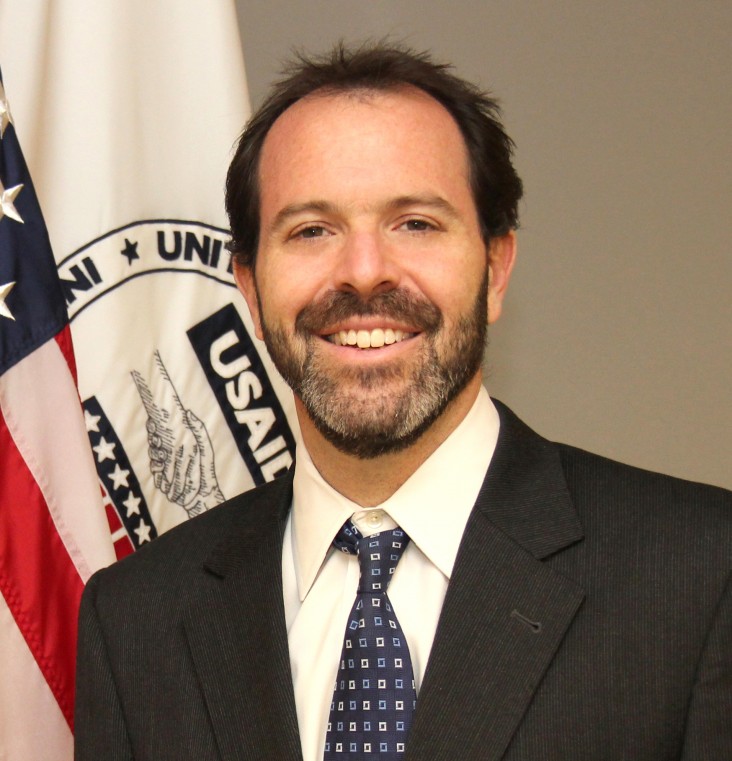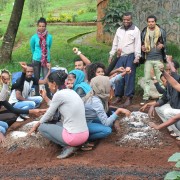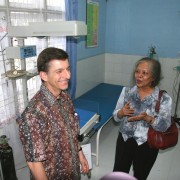In the same year that President John F. Kennedy signed the Foreign Assistance Act, mandating the creation of USAID, he also made a bold commitment to put a man on the moon within a decade.
We look back at the success of the Apollo mission as inevitable, but in 1961, even the brightest minds at NASA were unsure of how such an audacious feat would be accomplished. The transformative “giant leap for mankind” that followed was born from a leap of faith.
Until recently, the eradication of extreme poverty appeared as a laudable, if slightly fantastic goal. In 1980, every person born had a 50/50 chance of living on less than $1 a day. Extreme poverty represented an everyday reality, not a surmountable challenge.
Then, in several countries—including some really big ones like China, India and Brazil—things began to change, and rapidly. The plunging extreme poverty rate across the globe inspired the world to lead the Millennium Development Goals (MDGs) with the ambitious marker of cutting the global rate of extreme poverty in half by 2015. This target was not only met, but was reached five years early—dropping the extreme poverty rate to under 20 percent.
This great progress led to an even greater ambition—the moon shot of our era—to eradicate extreme poverty by 2030.
Like Kennedy in 1961, President Barack Obama’s call to the nation in his 2013 State of the Union address to join with our allies to accomplish this feat marked a commitment unlikely to be easy or defined by a clear path to success. But the Presidential Directive on Development, created in 2010, strongly reinforces the consensus view that inclusive economic growth and effective, participatory governance are essential, if not sufficient, foundations to eradicate poverty.
Investment in people—through increased gender equality, education, improved health standards, and better labor conditions and productivity—has made inclusive growth both achievable and sustainable. However, conflict, climate and corruption all continue to conspire to hold back and undermine progress in many parts of the world.
USAID’s Bureau for Policy, Planning and Learning has worked intensively with partners and the broader development community over the last year to understand these factors better, producing a Vision for Ending Extreme Poverty. This document recognizes poverty as multidimensional and assesses how our existing work contributes to reducing poverty and where we can collectively do more to drive poverty rates down.
This year, the world will define the next generation of goals on development and climate, and talk about how to finance and implement them. The proposed Sustainable Development Goals, or SDGs, are even more expansive than those they replace, driving forward many of the development goals of the MDGs while also addressing climate, peace and security, governance and other issues that universally approach establishing a better future for our planet.
Many of these will reinforce the tremendous gains of the MDGs, including halving the rate of mortality in children under the age of 5 years old from 12.7 million in 1990 to 6.3 million in 2013; pushing the rate of enrollment in primary education in developing countries to 90 percent; and halving the proportion of people without access to clean water five years early so that 2.3 billion people now have access to improved water sources.
Since 2011, USAID has worked in more than 50 countries to improve reading skills for more than 30 million children in primary grades, to create new or better employment opportunities for more than 127,000 youth, and to provide access to education for more than 1.1 million children and youth in conflict- and crisis-affected environments. And our Feed the Future efforts to address food insecurity and enhance nutrition and livelihoods helped 6.7 million farmers apply new technology to improve yields in 2013 alone, with farmers in Bangladesh seeing a $161 increase in average income per hectare.
But there are still more than 1 billion people living in extreme poverty and their path out will depend on much more than development assistance.
To ensure that those at the bottom are brought along, we will focus on eradicating extreme poverty and creating the circumstances to ensure all people can lead a life of basic human dignity. To do that, we can’t just focus on measures of income: Extreme poverty will cease to exist only when the contexts in which poverty thrives are made unsustainable by responsive governments, effective institutions and inclusive societies.
We must continue to push ourselves and our community to build the creativity, innovation, partnerships and political support to accomplish this ambitious goal. We must be willing and able to take risks in challenging environments, and we must get better at learning from our successes and failures. I believe we stand poised on the precipice of another “giant leap” toward a more equitable and inclusive world.












Comment
Make a general inquiry or suggest an improvement.